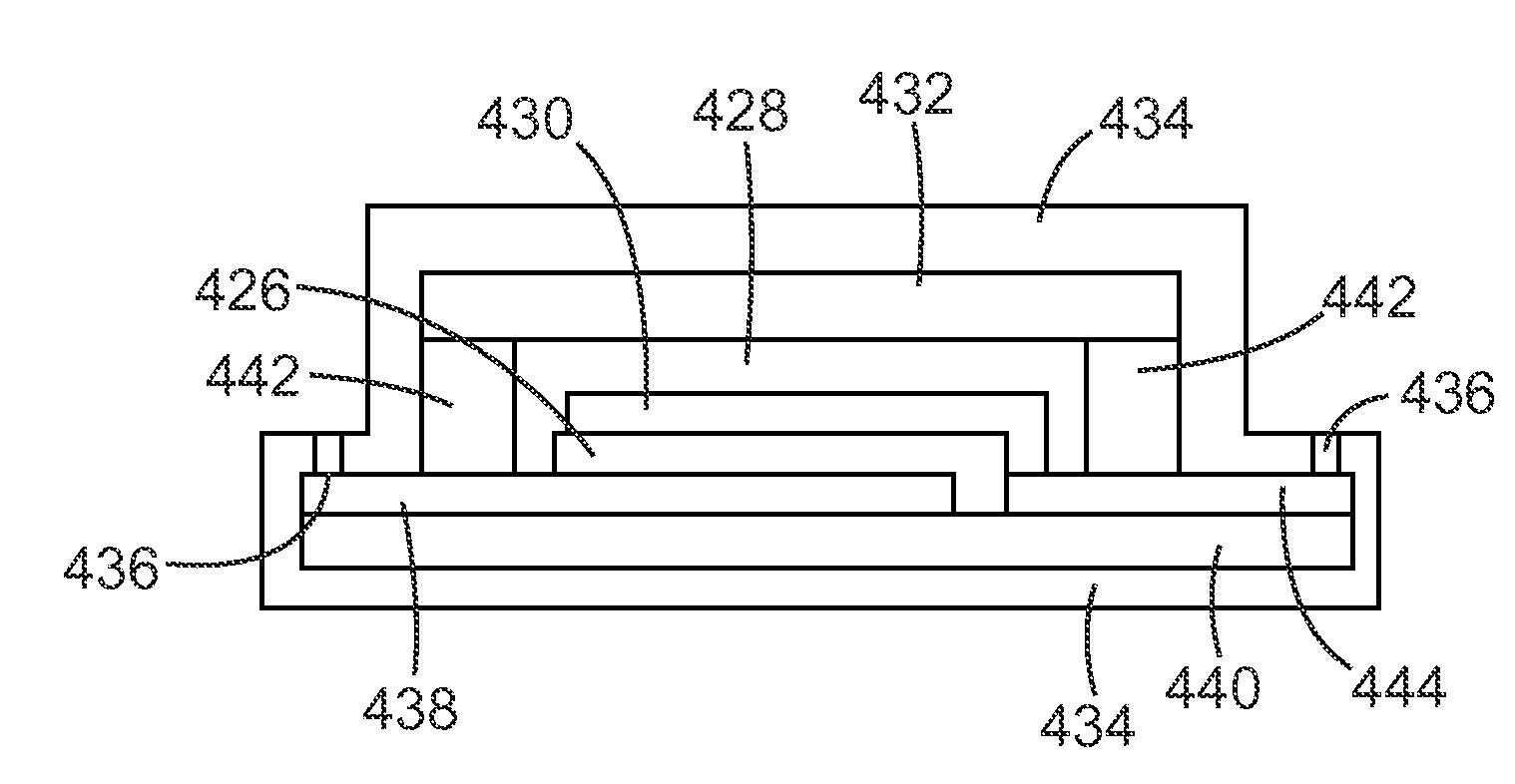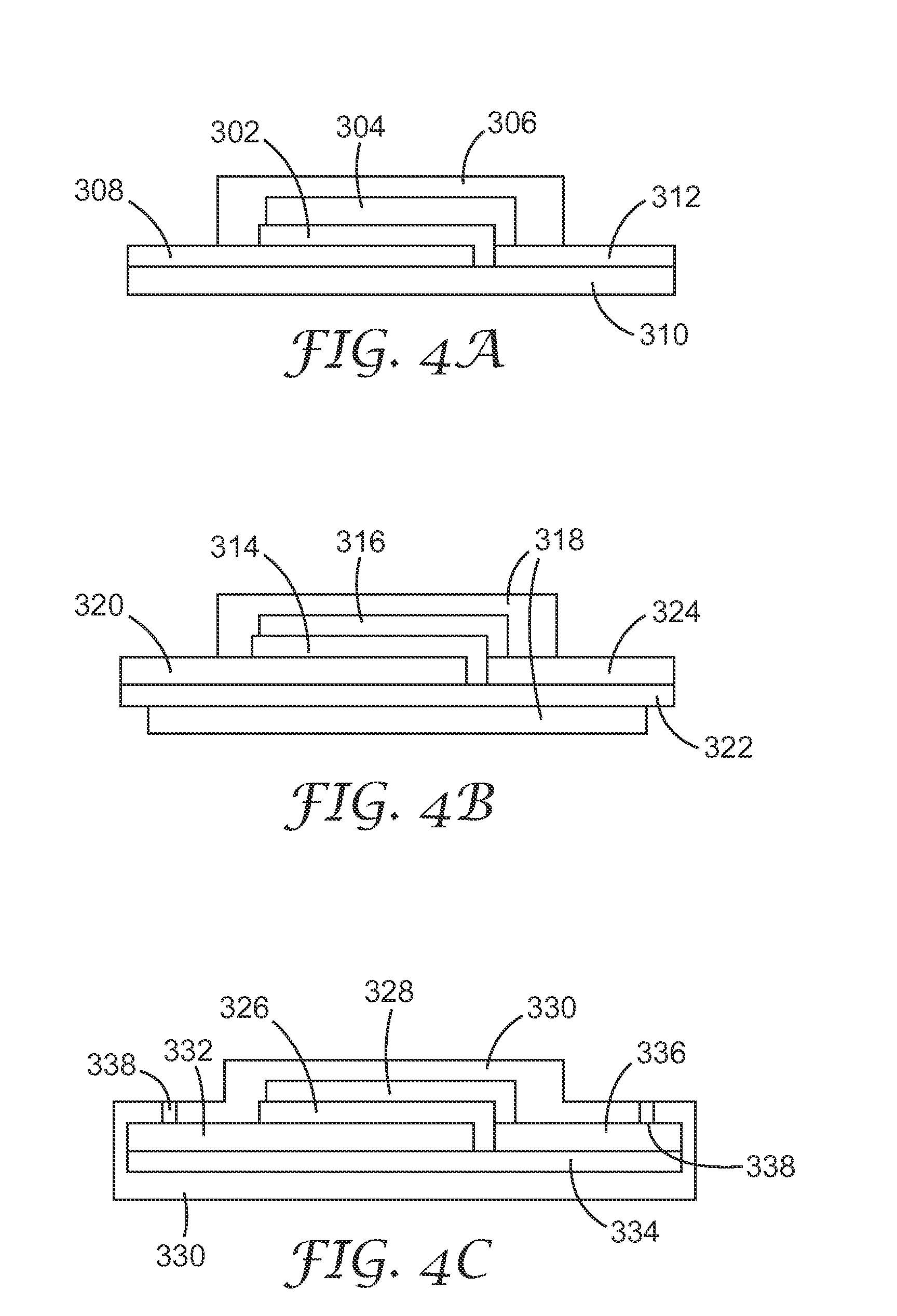Moisture barrier coatings for organic light emitting diode devices
a technology of organic light-emitting diodes and barrier films, which is applied in the field of barrier films, can solve the problems of metals typically lacking transparency, glass lacking flexibility, and oled devices suffering reduced output or premature failur
- Summary
- Abstract
- Description
- Claims
- Application Information
AI Technical Summary
Problems solved by technology
Method used
Image
Examples
example 1
[0070]Table 1 provides a description of abbreviations used in the present specification.
TABLE 1AbbreviationDescription / Commercial SourceNPDN,N′-bis(3-naphthalen-2-yl)-N,N′-bis(phenyl)benzidineavailable from H.W. Sands Corp, Jupiter, FLAlQTris(8-hydroxyquinoline) aluminum availablefrom H.W. Sands Corp, Jupiter, FLC545TCoumarin available from Eastman Kodak Co., Rochester,NY as Coumarin 545TFTCNQTetrafluoro-tetracyanoquinodimethane available fromTokyo Kasei Kogyo Co., Tokyo, JapanLiFLithium fluoride, 99.85%, available from Alfa Aesar,Ward Hill, MAAlPuratronic aluminum shots, 99.999%, available from AlfaAesar, Ward Hill, MAMTDATA4,4′,4″-tris(N-3-methylphenyl-N-phenylamino)triphenylamine, sublimed, availablefrom H.W. Sands Corp., Jupiter, FLAgPremion silver shot, 99.999% available from Alfa Aesar,Ward Hill, MACrPuratronic chromium pieces, 99.997% available fromAlfa Aesar, Ward Hill, MATMSTetramethylsilane, NMR grade, 99.9% available fromSigma-Aldrich, Milwaukee, WISiOSilicon monoxide, 99...
example 2
[0078]Top emitting OLEDs containing four independently addressable 5 mm×5 mm pixels were fabricated on ultrabarrier substrates by conventional thermal vapor deposition through shadow masks in a bell jar evaporator evacuated to 5×10−6 torr. Reflective anodes were first created by depositing Cr (100 Å at 1 Å / s) followed by Ag (1000 Å at 1 Å / s). The OLED device layers deposited on top of the Cr / Ag anodes were (in order of deposition): MTDATA doped with FTCNQ (2.8% doping, 3000 Å at 1.8 Å / s) / NPD (400 Å at 1 Å / s) / AlQ doped with C545T (1% doping, 300 Å at 1 Å / s) / AlQ (200 Å at 1 Å / s) / LiF(7Å at 0.5 Å / s) / Al(50 Å at 5 Å / s) / Ag(200 Å at 1 Å / s).
[0079]An four pixel top emitting green OLED on an ultrabarrier substrate film, such as those described above, was encapsulated by laminating a second ultrabarrier film over the pixel area using pressure-sensitive adhesive (PSA) transfer adhesive film (3M 8141 Optical Adhesive). The ultrabarrier layers faced the OLED device structure. The device was placed...
example 3
[0080]A square (approximately 35 mm) piece of ultrabarrier film was laminated to the center of a larger square (approximately 50 mm) of ultrabarrier film using a square (approximately 35 mm) gasket of PSA transfer adhesive film (3M 8141 Optical Adhesive). The ultrabarrier layers faced each other. The width of the gasket was approximately 5 mm which left a square (approximately 25 mm) cavity between the two ultrabarrier films. The construction was placed in the DLF chamber in the same manner as described in Example 1 with the surface bearing the smaller ultrabarrier film facing upwards. The system was pumped to base pressure (below about 1×10−3 Torr) and oxygen gas was introduced at a flow rate of 250 sccm. The sample surface was primed by a 10 second exposure to an oxygen plasma (200 watt RF power). Tetramethylsilane gas was then introduced (50 sccm) while maintaining the oxygen flow at 250 sccm. A plasma was struck at 200 watts for 5 minutes to provide a diamond-like film on the fi...
PUM
 Login to View More
Login to View More Abstract
Description
Claims
Application Information
 Login to View More
Login to View More - R&D
- Intellectual Property
- Life Sciences
- Materials
- Tech Scout
- Unparalleled Data Quality
- Higher Quality Content
- 60% Fewer Hallucinations
Browse by: Latest US Patents, China's latest patents, Technical Efficacy Thesaurus, Application Domain, Technology Topic, Popular Technical Reports.
© 2025 PatSnap. All rights reserved.Legal|Privacy policy|Modern Slavery Act Transparency Statement|Sitemap|About US| Contact US: help@patsnap.com



